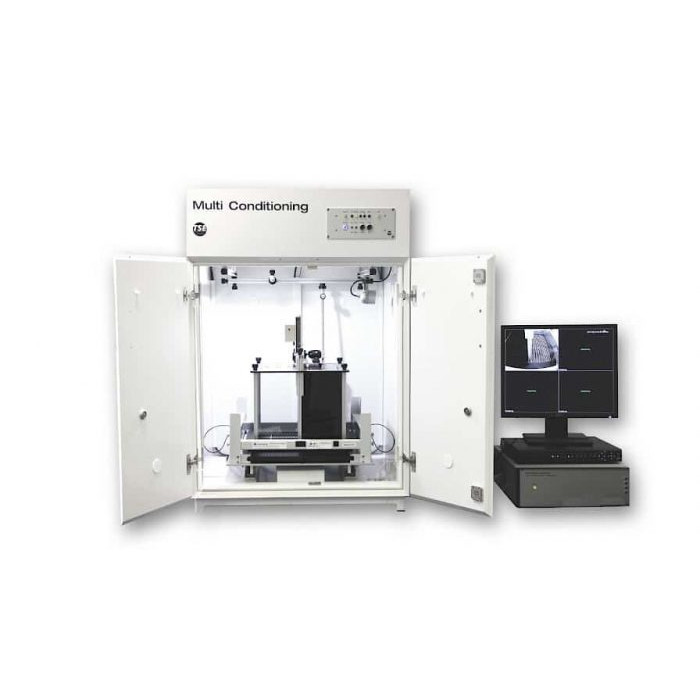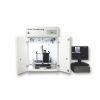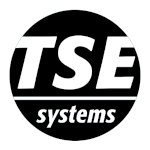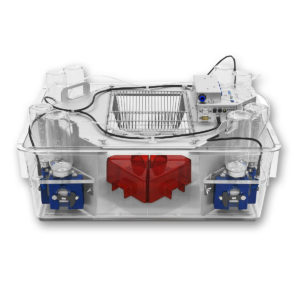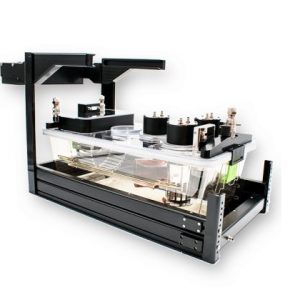Multi Conditioning System
New Standard For Behavioral And Cognitive Phenotyping
Product Enquiry
If you would like to send us an enquiry about this product, please click the button below, fill in the form and submit.
Product EnquiryMulti Conditioning System
One System – Ten Behavioral Paradigms
The TSE Multi Conditioning System is a multi-purpose modular platform that integrates ten different behavioral paradigms for the evaluation of learning, memory, emotion, stress-related and locomotory behavior in mice and rats – all in one system! The exceptional variability and flexibility is a key feature of the Multi Conditioning System making the system unique on the market!
The universal measuring unit is an enclosed environment that offers full software-control of environmental conditions. By excluding the influence of external factors (sound, scent, light, temperature – even the presence of the observer) accuracy and intra- & inter-lab reproducibility of experimental data is maximized.
The measuring unit is completed with a large variety of arenas and accessories. One- or Two-compartment arenas with or without floor and special arenas for combination with optogenetics or fiber photometry are available. Depending on the paradigm foot shock with an extraordinarily small step width of 0.025mA can be applied as an unconditioned stimulus. Software-controlled sine sound, noise and light can be used as conditioned stimuli with adjustable intensity and/or frequency – even when the experiment is running! Animal position and movement is recorded using a high-resolution 3D infrared light-beam frame with rearing detection in up to 2 levels.
Video recording in parallel allows additional observation even in total darkness. Use the integrated TTL signals to couple the system to 3rd party instruments for combination with optogenetics, electrophysiology or fiber photometry. Three software packages can be freely combined according to your experimental requirements. The immense variety of experimental parameters allows for unique flexibility in experimental protocols.
The system is in continuous development in close cooperation with our users and new features are added frequently. Please contact us to discuss your specific needs!
Features
- Ten paradigms in one system
- Up to 4 units operated by a single PC
- Strictly controlled environment – increased reproducibility
- Variety of test arenas & accessories – maximum flexibility
- High resolution 3D movement detection
- Parallel camera observation
- User-friendly software including basic GLP features
- Customizable experimental design
- Extensive graphical and numerical analyses
Research areas
- Basic Neuroscience
- Behavioral Phenotyping
- Neuropsychiatric Diseases
- Drug Development
Modules
- Active Avoidance
- Place Preference
- Fear Conditioning
- Hole Board Exploration
- Latent Inhibition
- Learned Helplessness
- Light-Dark Test
- Open Field/Activity
- Panic Response
- Passive Avoidance
Brochure
Selected Publications
Ineichen C, Greter A, Baer M, Sigrist H, Sautter E, Sych Y, Helmchen F, Pryce CR. Basomedial amygdala activity in mice reflects specific and general aversion uncontrollability. Eur J Neurosci (2020); Dec 18. Online ahead of print
Khalaf O, Gräff J. Reactivation of recall-induced neurons in the infralimbic cortex and the basolateral amygdala after remote fear memory attenuation. Front Mol Neurosci 2019; 12: 70
Richetto J, Polesel M, Weber-Stadlbauer U. Effects of light and dark phase testing on the investigation of behavioural paradigms in mice: relevance for behavioural neuroscience. Pharmacol Biochem Behav 2019; 178: 19-29.
Wang G, Xie H, Wang L, Luo W, Wang Y, Jiang J, Xiao C, Xing F, Guan JS. Switching from fear to no fear by different neural ensembles in mouse retrosplenial cortex. Cereb Cortex 2019; 29(12): 5085-97.
Paul AK, Gueven N, Dietis N. Age-dependent antinociception and behavioral inhibition by morphine. Pharmacol Biochem Behav 2018;168: 8-16.
Selected Product Citations
Chronic adolescent stress increases exploratory behavior but does not change the acute stress response in adult male C57BL/6 mice |
|
| Sturman Oliver, von Ziegler Lukas | biorxiv | Published 28 Jun 2021 |
| Article Snippet PrePrint: The mice were subjected to these cage changes twice a week (Tuesday/Friday) for seven weeks, during the last cage change the mice were returned to their original cage and allowed to rest for 5 weeks prior to any further testing.. Open Field Test (OFT)Open-field testing took place inside sound insulated, ventilated multi-conditioning chambers (TSE Systems Ltd, Germany).. The open field arena (45 cm x 45 cm x 40 cm [L x W x H]) consisted of four transparent Plexiglas walls and a light grey PVC floor. |
|
Molecular roadmap of the healthy stress response in the mouse hippocampus |
|
| von Ziegler Lukas M., Floriou-Servou Amalia, Das Gupta Rebecca R. | bioRxiv | Published 26 Mar 2021 |
| Article Snippet PrePrint: Open field test (OFT)Open-field testing was performed in sound insulated and ventilated multi-conditioning chambers (MultiConditioning System, TSE Systems Ltd, Germany), as described previously ( ).. Briefly, the open field arena had dimensions 45 cm (l) x 45 cm (w) x 40 cm (h), and consisted of four transparent Plexiglas walls and a light gray PVC floor. Multi Conditioning System , 256060 , 256060 , multi conditioning system , Multi-conditioning chambers , |
|
Prenatally traumatized mice reveal hippocampal methylation and expression changes of the stress-related genes Crhr1 and Fkbp5 |
|
| Anne-Christine Plank, Stefan Frey, Jalal Solati | Transl Psychiatry | Published 23 Mar 2021 |
| Article Snippet Trauma application MT was induced by contextual fear conditioning (Multi-Conditioning System, TSE Systems, Bad Homburg, Germany) at GD 12 (corresponding to the second trimester of gestation in humans), as previously described .. Animals were placed into the shock chamber for application of an inescapable foot shock: following 198 s of habituation, a single electric foot shock (2 s, 1.5 mA) was delivered via the metal grid. Multi Conditioning System , 256060 , 256060 , multi conditioning system , Fear.. |
|

